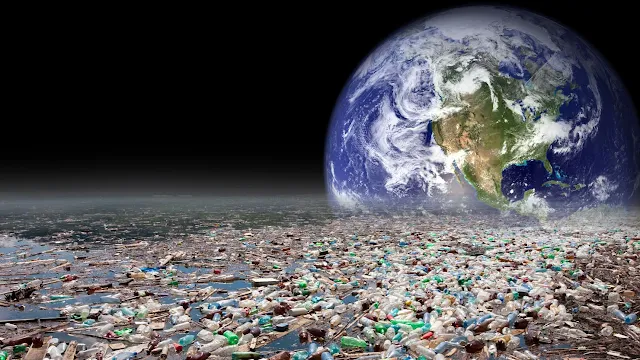Plastic Has Become Part Of Earth's Geology
 |
| Representative photo |
Humans have made enough plastic since the second world war to coat the Earth entirely in clingfilm, an international study has revealed. This ability to plaster the planet in plastic is alarming, say scientists – for it confirms that human activities are now having a pernicious impact on our world.
According to geologists from the University of Leicester, plastic has become such a central component of modern life, it has found its way into our Earth's crust itself, becoming a geological marker in recent strata.
Anyone who loves The Graduate (and everyone should be someone who loves The Graduate) knows that plastics were still relatively novel when the movie was released in 1967. Scientific American recalls that in 1953, House Beautiful was singing plastic's praise, writing that with plastics, "You will have a greater chance to be yourself than any people in the history of civilization."
But anyone buying, say, a plastic fishing buoy in 1953 might, shockingly, still have it. It takes 80 years for buoys to degrade, which is sadly rather modest compared with other plastic products; a plastic beverage bottle made today will still be intact in the year 2465. According to the New Hampshire Department of Environmental Services, plastic fishing line would still be here in 2616. By comparison, a paper towel decomposes about two to four weeks after being discarded, about the same rate as a banana peel.
There's an upside: "It may seem odd to think of plastics as archaeological and geological materials because they are so new," said Matt Edgewort, an archaeologist and historian, "but we increasingly find them as inclusions in recent strata. Plastics make excellent stratigraphic markers."
Translation: the plastic is so obvious in the Earth's crust, it gives an exact timetable for when that layer of ground became solid Earth. And since it's rarely broken down, it screams out like a child lost in a Home Depot. It simply couldn't be more obvious.
These scientists and others claim that we are now in the Anthropocene epoch, a theoretical geographical period marked by human activity. While other epochs are defined by the Earth's natural forces, the Anthropocene is defined by us. And it's not looking good.
"Once buried, being so hard-wearing, plastics have a good chance to be fossilized - and leave a signal of the ultimate convenience material for many million years into the future," said Jan Zalasiewicz, professor of palaeobiology from the University of Leicester's geology department. "The age of plastic may really last for ages."
The new study is published in the journal Anthropocene.

%20(1).webp)






